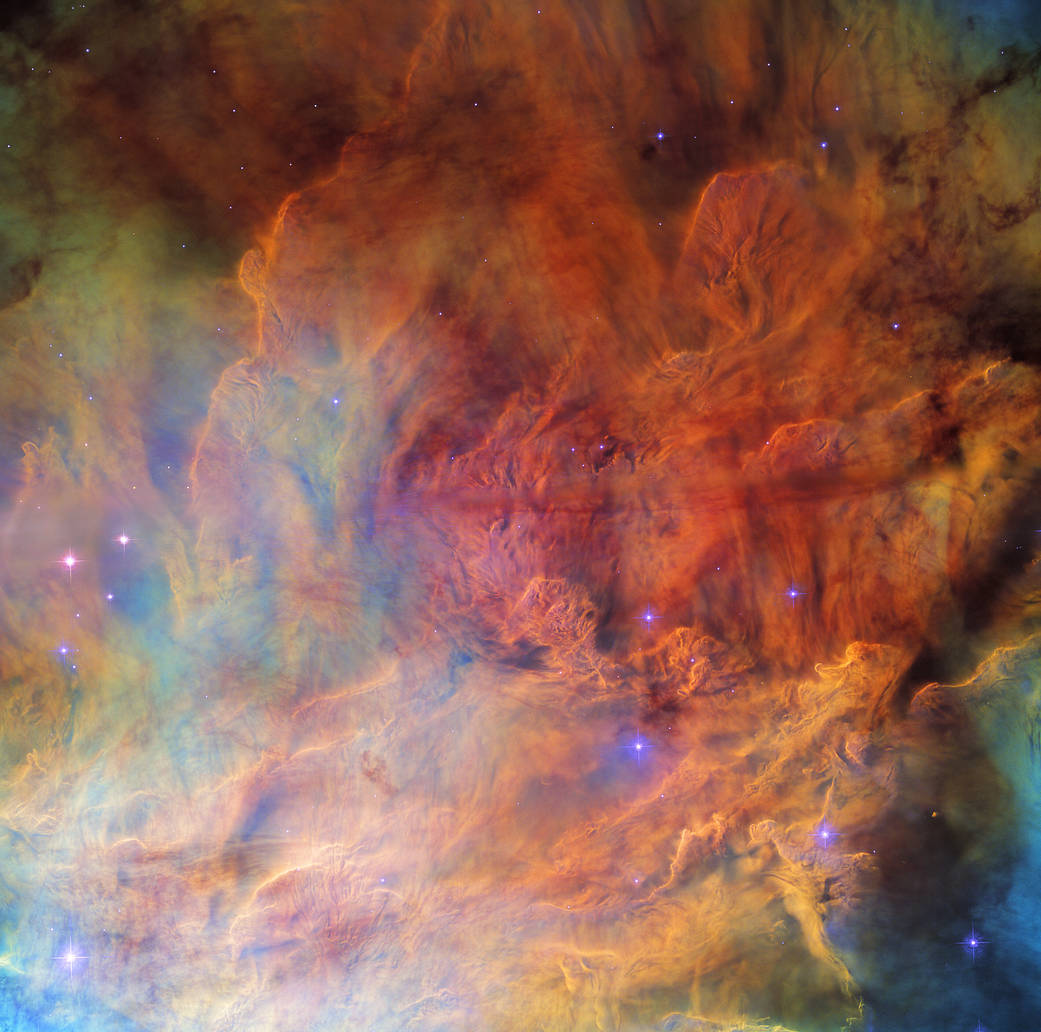A portion of the open cluster NGC 6530 appears as a roiling wall of smoke studded with stars in this image from the NASA/ESA Hubble Space Telescope. NGC 6530 is a collection of several thousand stars lying around 4,350 light-years from Earth in the constellation Sagittarius. The cluster is set within the larger Lagoon Nebula, a gigantic interstellar cloud of gas and dust. Hubble has previously imaged the Lagoon Nebula several times, including these images released in 2010 and 2011. It is the nebula that gives this image its distinctly smoky appearance; clouds of interstellar gas and dust stretch from one side of the image to the other.
Astronomers investigated NGC 6530 using Hubble’s Advanced Camera for Surveys and Wide Field Planetary Camera 2. They scoured the region in the hope of finding new examples of proplyds, a particular class of illuminated protoplanetary discs surrounding newborn stars. The vast majority of known proplyds are found in only one region, the nearby Orion Nebula. This makes understanding their origin and lifetimes in other astronomical environments challenging.
Hubble’s ability to observe at near-infrared wavelengths – particularly with Wide Field Camera 3 – have made it an indispensable tool for understanding star birth and the origin of exoplanetary systems. The new NASA/ESA/CSA James Webb Space Telescope’s unprecedented observational capabilities at infrared wavelengths will complement Hubble observations by allowing astronomers to peer through the dusty envelopes around newly born stars and investigate the faintest, earliest stages of star birth.
Text credit: European Space Agency (ESA)
Image credit: ESA/Hubble & NASA, O. De Marco; Acknowledgment: M.H. Özsaraç
在这张来自NASA/ESA哈勃太空望远镜的照片中,疏散星团NGC 6530的一部分看起来像是一堵布满星星的烟雾墙。NGC6530是位于人马座,距离地球4350光年的数千颗恒星的集合。该星团位于更大的泻湖星云内,这是一个巨大的星际气体和尘埃云。哈勃此前曾多次拍摄泻湖星云的图像,包括2010年和2011年发布的这些图像。正是这个星云使这张图像呈现出明显的烟雾状外观;星际气体和尘埃云从图像的一侧延伸到另一侧。
天文学家使用哈勃先进的巡天相机和广角行星相机2来研究NGC 6530。他们搜索了该区域,希望找到proplyds的新例子,proplyds是一种围绕新生恒星的特殊类型的发光原行星盘。绝大多数已知的proplyds只在一个区域被发现,即附近的猎户座星云。这使得了解它们在其他天文环境中的起源和寿命具有挑战性。
哈勃望远镜在近红外波段的观测能力——特别是使用广角相机3——使其成为了解恒星诞生和系外行星系统起源的不可或缺的工具。新的NASA/ESA/CSA詹姆斯·韦伯太空望远镜在红外波长上前所未有的观测能力将补充哈勃的观测,使天文学家能够透过新生恒星周围的尘埃外壳,研究恒星诞生的最微弱、最早期阶段。
文稿来源:European Space Agency (ESA)
影像来源:ESA/Hubble & NASA, O. De Marco; 致谢:M.H. Özsaraç



